This blog post was originally published on hrwhealthcare.com.
Imagine being newly diagnosed with a condition. Now imagine that when you google that condition you get old or conflicting information, or worse: only a few results. You would feel isolated and frustrated, not knowing about it and not knowing where to turn. For people with rare and invisible conditions, this is often their reality.
Rare diseases are conditions that affect less than 200k patients in the US, and an invisible illness is an umbrella term for any medical condition that isn’t easily visible to others. Information seeking behaviour in this context can be an extended and difficult process, spanning multiple complex and out-of-date media sources and online/offline channels.
In this environment, many people with rare and invisible conditions turn to patient influencers who play a central role in spreading information and making connections to form a community. But, where do these advocates get their information from? How does the variability of the advocate’s day-to-day experience impact their communication? Once they’ve posted, how does it spread?
This was the question that Healthcare Research Worldwide asked in a novel self-funded study conducted in early 2019. They wanted to examine the flow of information into and out of patient influencer ecosystems.
To explore this, HRW conducted the study with ten participants over the course of one month. Their approach took them through several key influencer environments:
- The digital world: Using our RealityMeter technology to track media consumption on mobile and desktop. This allowed HRW to see precisely where and how influencers searched for information over the course of a month; what they searched for; where it led them; and how long they spent there. It also provided rich emotional context through their app usage and media consumption behaviours outside information seeking – including shopping, music, movies and television streaming.
- The real world: Adapted ethnographic elements (notes, video diaries, and audio clips) also allowed HRW to hear from the influencers themselves in-the-moment about what was happening in their lives: struggles with their conditions; feelings about what they were reading; emotional variation day-to-day; interactions they had with the disease community offline; and contact with HCPs.
- Back online: Looking at the influencer profiles on social media, we can see what happens to the information and stories they share – how different types of content drive engagement and what inspires the sharing of personal stories, clinical data, or advocacy.
By investigating these threads, HRW were able to observe some interesting patterns as well as some moving human stories from patient influencers in the rare disease non-ketotic hyperglycinemia (NKH) and in chronic migraine. In particular:
- The degree to which attention is fragmented in the digital space, with attention on each page lasting only seconds
- How health exists in a very small window in people’s lives, usurped by work and other activities of daily living and can get variable priority
- How internet search terms are revealing, but search behaviours are very brief and event-driven
- Observable origin stories for social media posts (how specific information or life events can inspire posts on social media)
- Path-to-purchase search behaviours and how these are interrupted with offline needs and social media browsing
- Passive media tracking can reveal habitual patterns and times of day when channels are more likely to be used
- Media tracking in combination with ethnography can reveal the inspiration for social media posts that even the patient themselves wasn’t aware of
- How social media posts only tell part of the story, and patient influencers can sometimes have an even greater community presence in private channels: posting alone is not influencing
The findings from this landmark study were debuted at the Intellus Worldwide Summit in May 2019. To recognise UK migraine awareness week 1-7th September, we will join HRW in sharing a webinar on Wednesday 4th September at 16:00 CET/15:00 GMT/10:00 EST in conjunction with chronic migraine warrior Lucy Wates to present these findings again for a wider audience.


